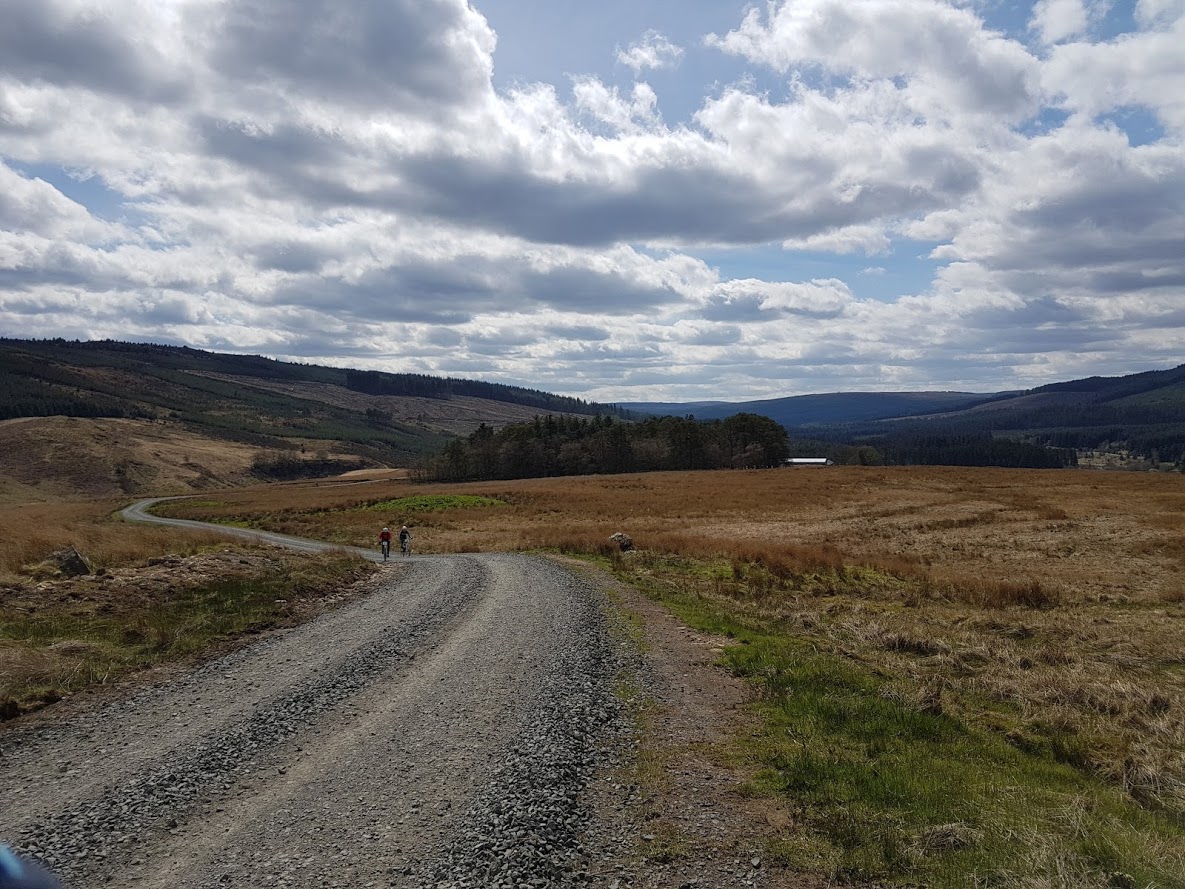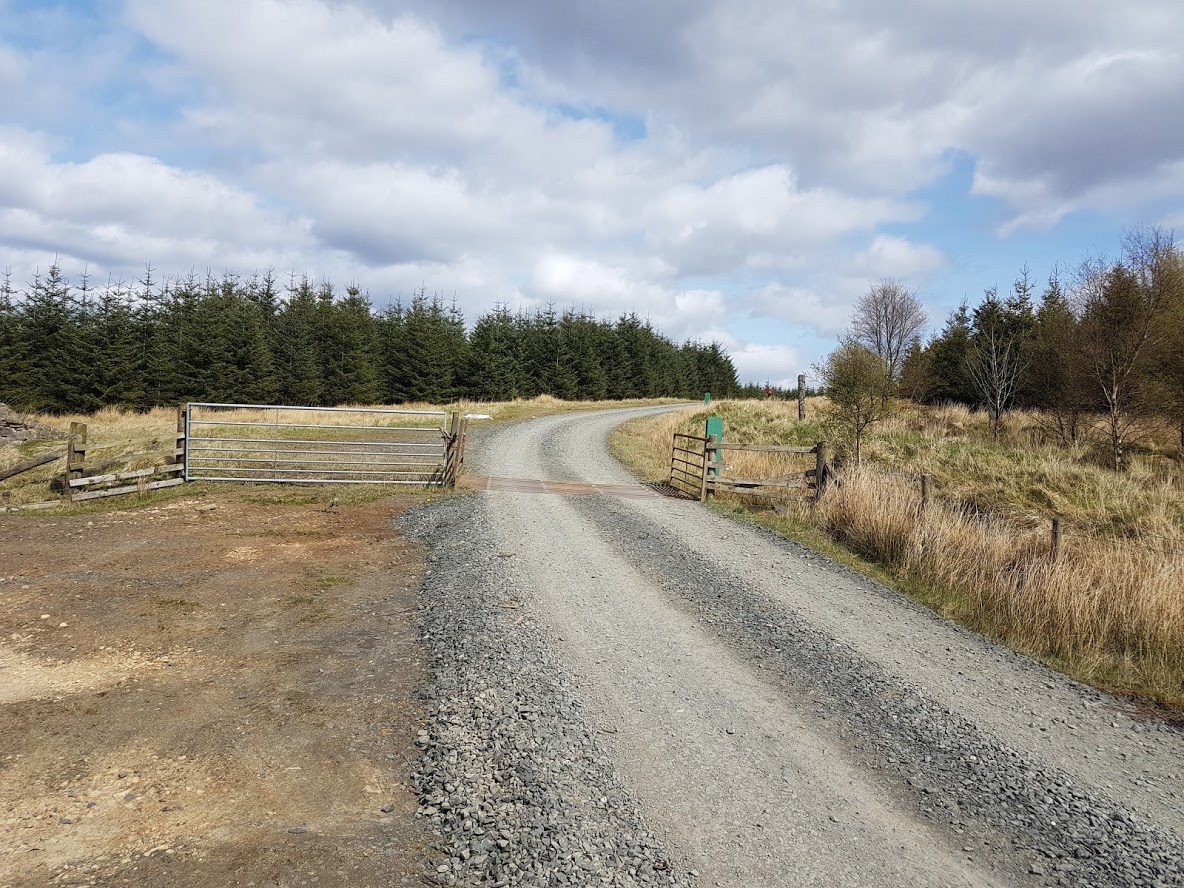After witnessing several riders on 2017’s Dirty Reiver slide off the gravel track and plummet headlong into bushes on various sweeping corners, it occurred to me that there quite a few riders are tackling gravel the same way they would a tarmac road. The riding techniques associated with gravel roads, will differ from what you may be used to, especially if you’ve come from a road bike background.
If you’ve dabbled in cyclocross or even better, mountain biking, then you’ll adapt to riding on loose, gravel trails a lot quicker. To avoid becoming another pair of legs sticking out of a gorse bush, read on…

Drop the Death Grip
The most important of our gravel riding skills is to avoid clenching onto the hoods like you’re trying to squeeze the life out of them. MTB Skills Gurus always say ‘be loose’ and this is exactly what you want on gravel too; keep your arms relaxed and slightly bent at the elbows, don’t lock out your arms and just… chill. Seriously, it sounds like a cliché, but the more relaxed you are, the more control you’ll have over the bike.
Comfort
A comfortable rider is a relaxed rider. Consider double wrapping your bars with bar tape or better still, look at a thicker bar tape. One of our favourites is Lizard Skins DSP 3.2mm bar tape. Not only is it thick, but it’s also super grippy, so you’ll instinctively loosen your grip without even thinking about it!

Lizard Skins DSP 3.2 tape makes for a comfortable ride.
Also consider raising your stem at least one spacer higher than you’d usually use on the road. Fatigue from riding on rough surfaces will abuse your neck and shoulders much quicker than it will on a smooth road. Raising the bars also helps to move your body into a more central position over the bike, reducing the front-end weight bias.
Steady and easy movements
Turning or jerking the bars sharply into a corner is going to unsettle the balance of the bike. Or worse still, cause the front wheel to slide and lose traction. Shift your weight, turn your hips into the direction you want to go, and gently lean.
If the road allows it, take a wide berth leading into the corner, ride through the apex (or close to it), and exit in the same manner to which you entered. This is the preferred line.
Be aware that riding the apex isn’t always the best approach. Quite often, the insides of corners are heavily rutted or contain much looser and deeper gravel. And never ride the apex of a blind corner as you never know if there is a vehicle approaching. Treat fire roads as you would any public road and expect the unexpected!

Note the edges of this gravel road is littered with deep and loose gravel. Keep your wheels in the lines that has seen the most traffic and compaction.
Descending rocky or loose trail
Avoid braking, allow the bike to naturally roll over the rough stuff with little rider input. Braking over rough surfaces causes the bike to skip and lose traction. If you really must touch the brakes, modulate your speed by gently feathering the rear brake only. Hauling on the rear anchor is only going to cause a huge slide.
If you experience a tank slapper during a descent, where the bike starts to shake and feel unstable, you can often calm the vibration by slowly moving your leg inwards towards to touch the top-tube. Your body will help absorb the vibration and settle the bike.
Finally… Chin Up!
One of the best things you can do if you want to be better on your bike, is to look where you are going. It sounds pretty obvious, but you want to look a lot further ahead rather than down at your wheel. The easiest way to think this one through is to keep your chin up! It’ll help you look where you want to go. And turn your head in the direction you want to head, don’t just move your eyes! Physically moving your head for the turn will also make you move your neck, your shoulders… your body weight will help with a more graceful turning movement than just moving the bars ever will.
Conversely, and this is equally important. If you are going through a tight or technical section DO NOT LOOK AT THE SECTION YOU WANT TO AVOID. Do this, and you will end up precisely where you don’t want to be. Mountain bikers will have learned this to their cost, usually in the formative stage of their genesis. It might be a less well known phenomenon to roadies.

Last modified: 27th November 2017







